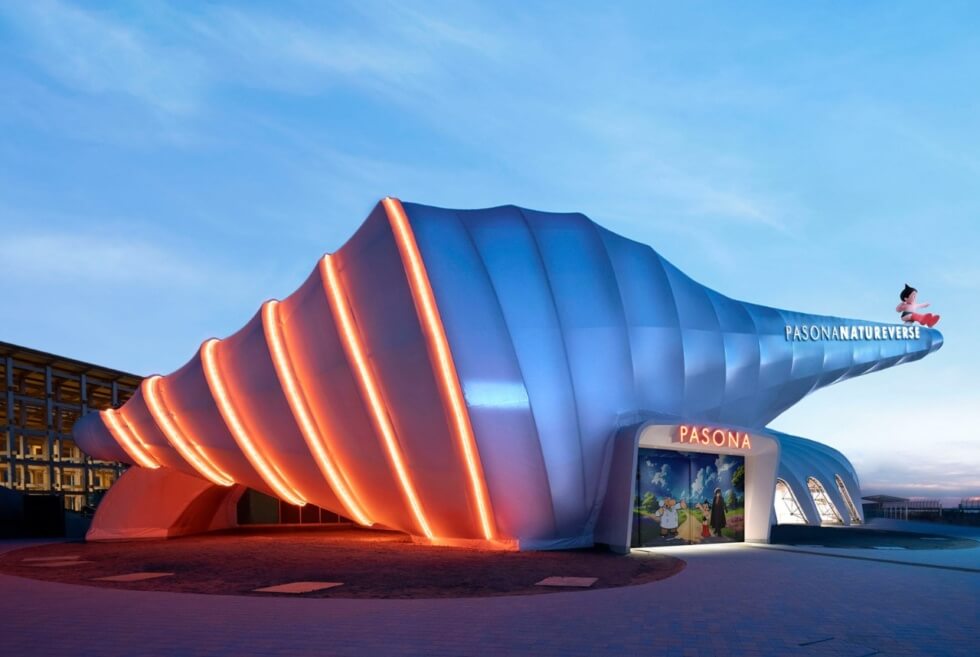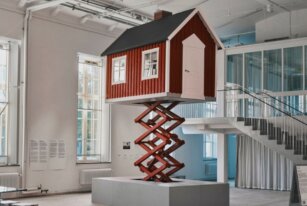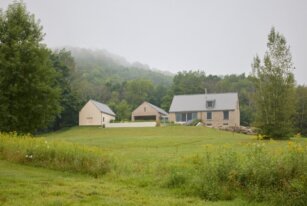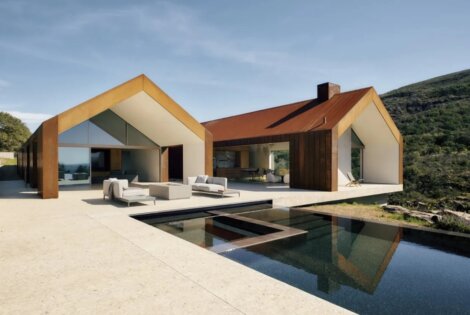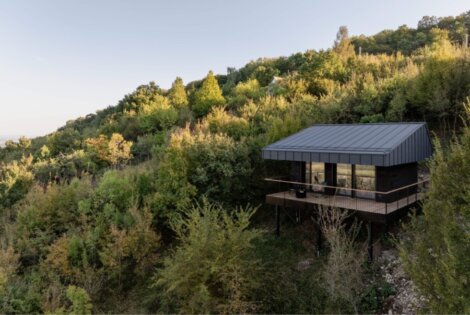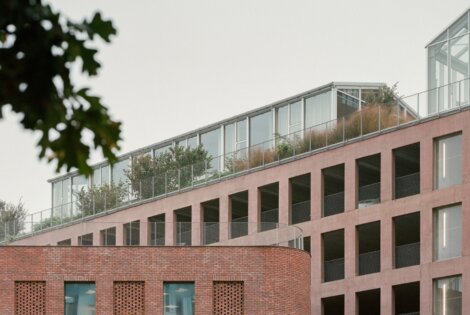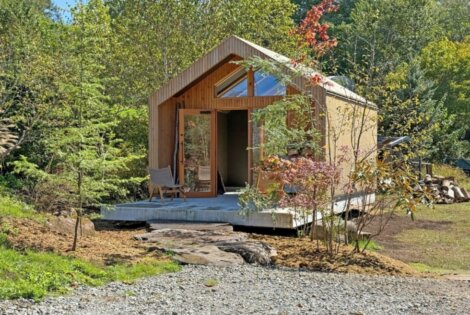The Design Labo designed the Pasona Natureverse Pavilion at Expo 2025 Osaka after the shell of a prehistoric marine mollusc. The pavilion comprises of two shell-shaped structures. The main part takes after the spiralling shell of an ammonite.
CEO Satoshi Itasaka says the structure represents “the connection between humans and nature.” He told Dezeen, “Since the Expo’s theme is life, we adopted the coiled shell as its symbol and conceived a pavilion where visitors can experience the connection between humans and nature and the continuity of life.”
The Pasona Natureverse Pavilion showcases a series of interactive exhibition spaces that explore physical, mental and social health. which is in line with the Expo’s theme, “Designing Future Society for Our Lives.” The spaces feature three zones: History of Life, Body and Mind/Bonds, each featuring a range of interactive and digital displays.
Among the exhibits include a tree-shaped sculpture exhibit that depicts the history of evolution. There’s also a lab-grown heart made through biomaterials and bioengineering. Itasaka explained that the spiral circulation route, with its ceiling height that reaches up to 16m, lets visitors take in the exhibits efficiently. He added, “Within this grand volume, visitors encounter dynamic moving LED boxes, a zone where they can see a heart created from iPS cells, and an area offering a glimpse into the world of soil microorganisms – content that combines surprise with learning.”
A thin film of water that coats the skin of the shell serves as a water-based cooling system. Its spiral form creates grey water when it collects and reuses both the water coating and rainwater. Then at night, the Pasona Natureverse Pavilion is a mesmerizing sight. The ridge of the shell glows via color-changing light strips and projected light effects.
Check It Out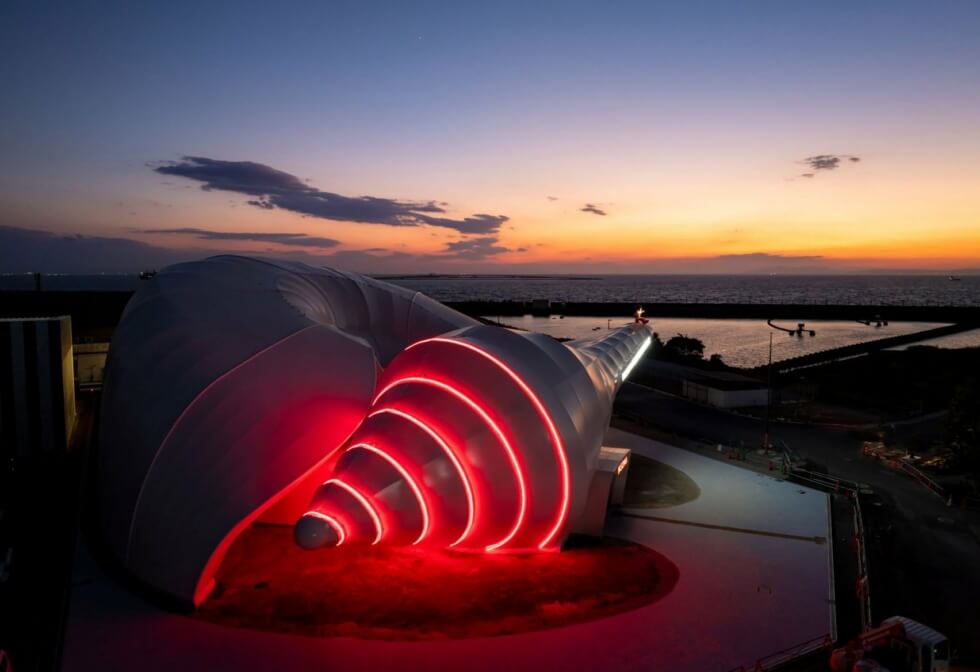
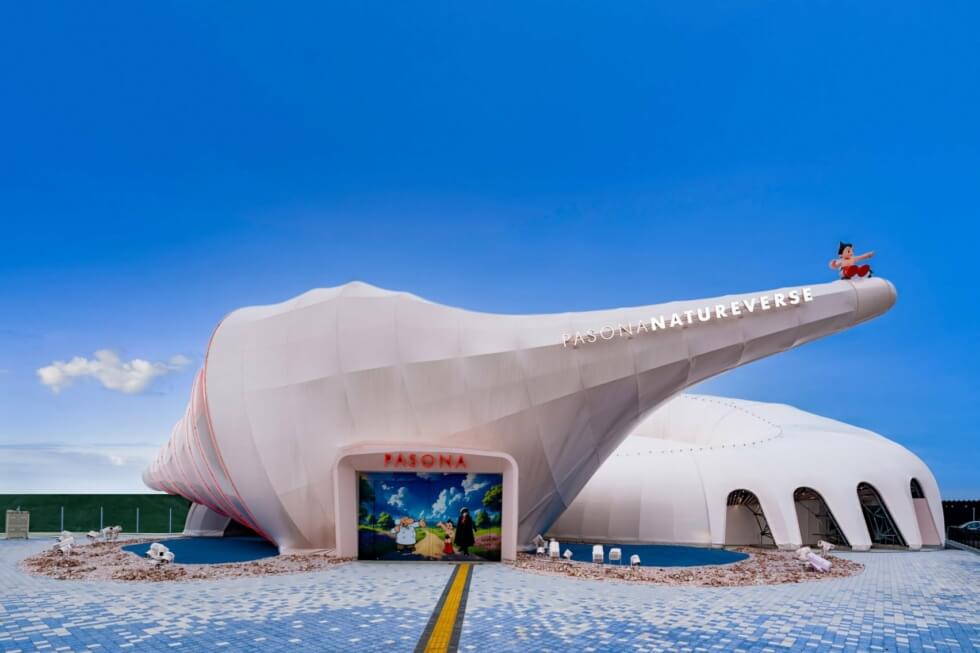
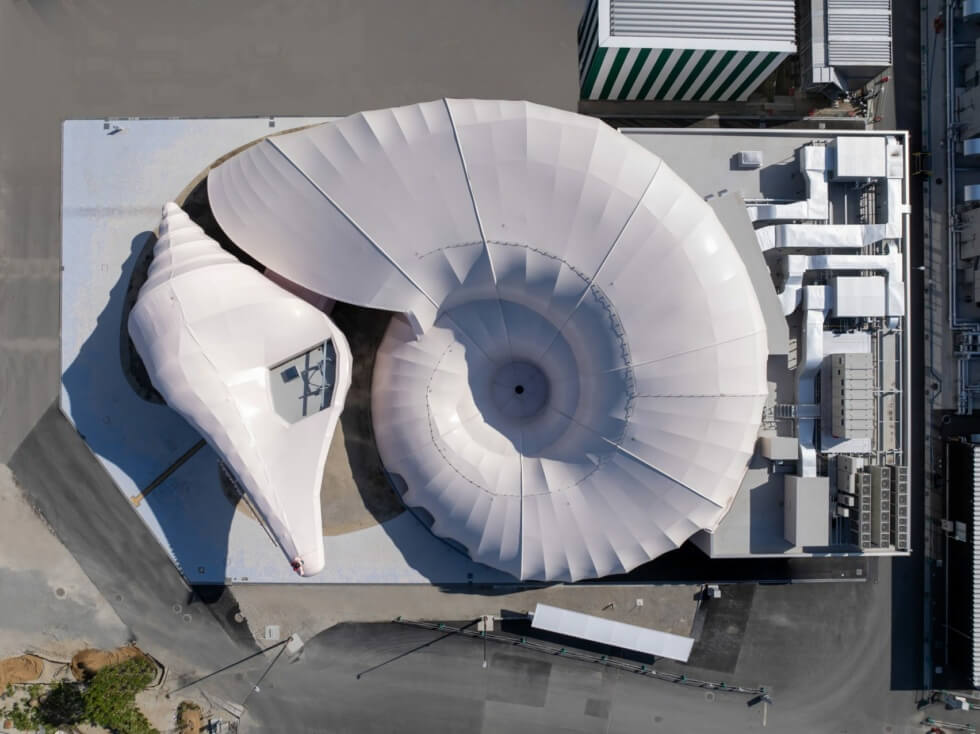
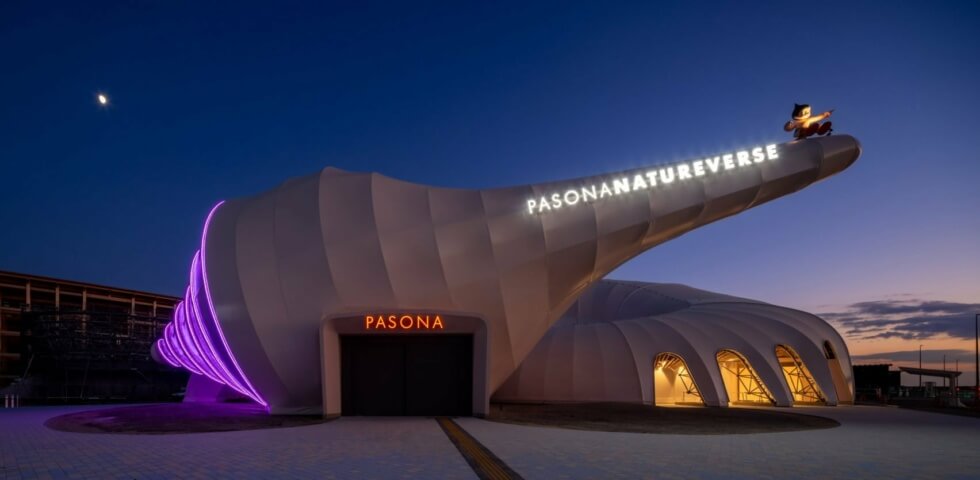
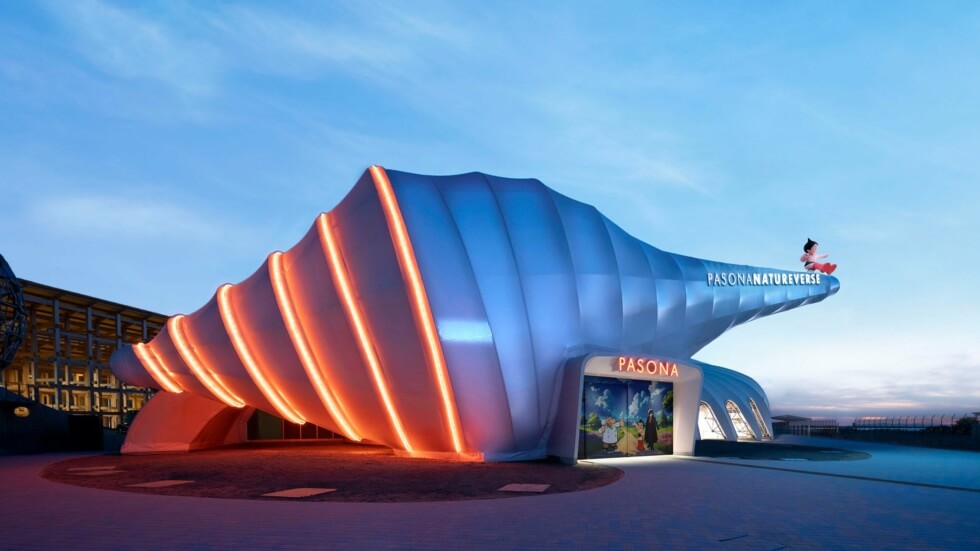
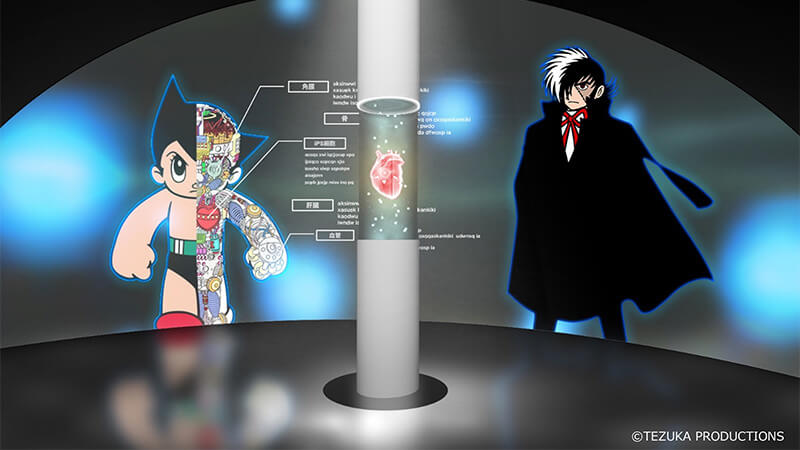
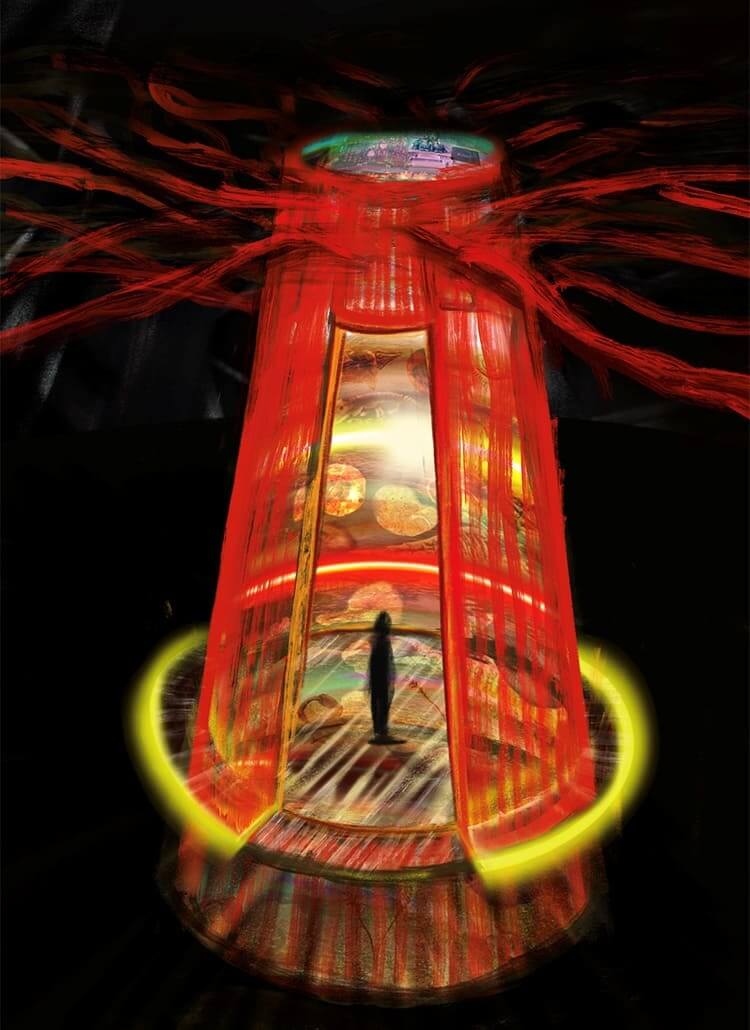
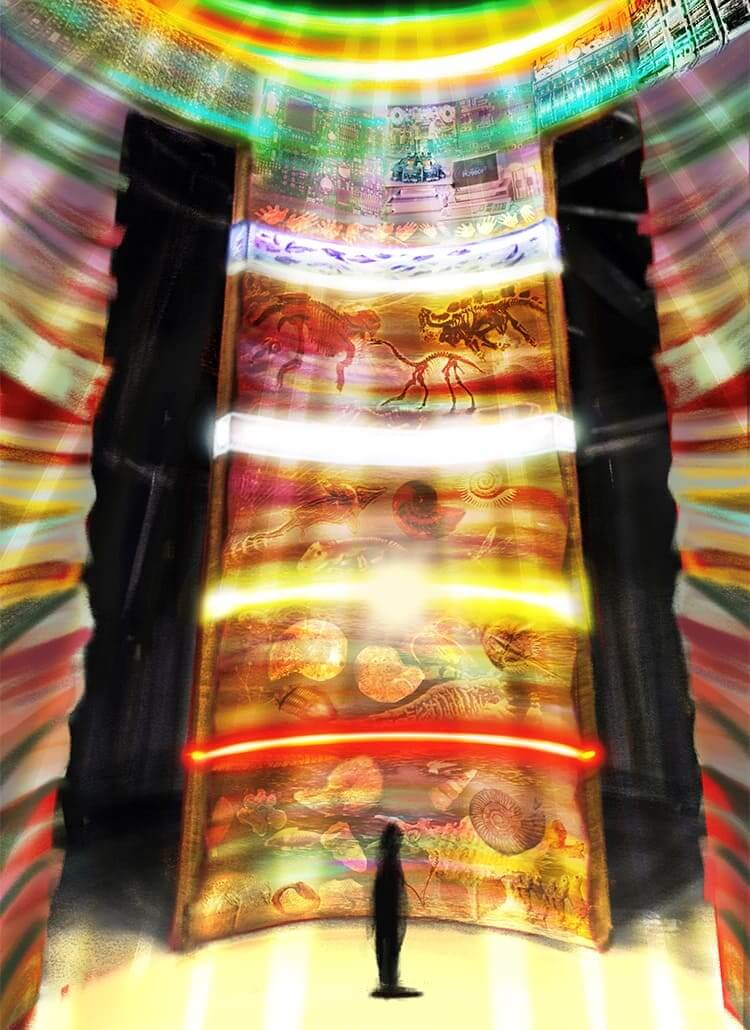
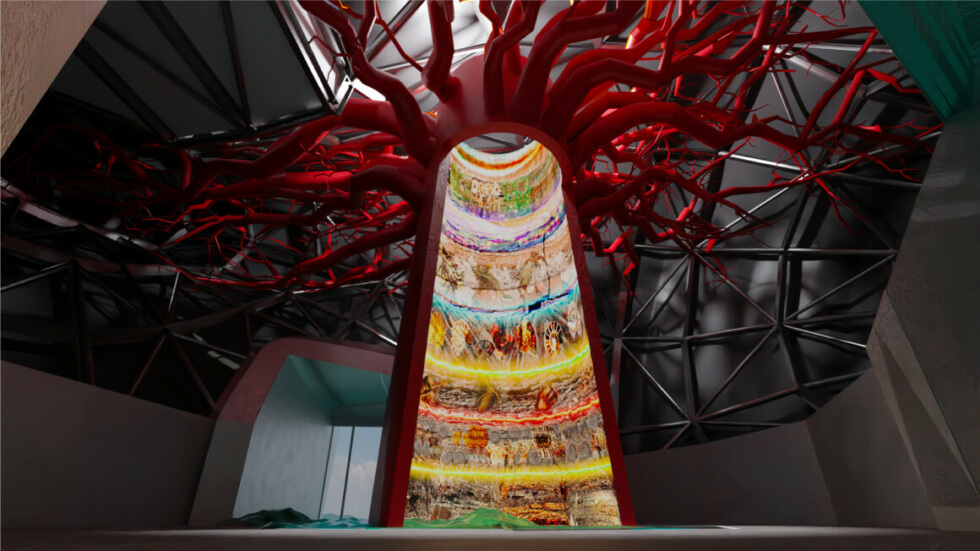
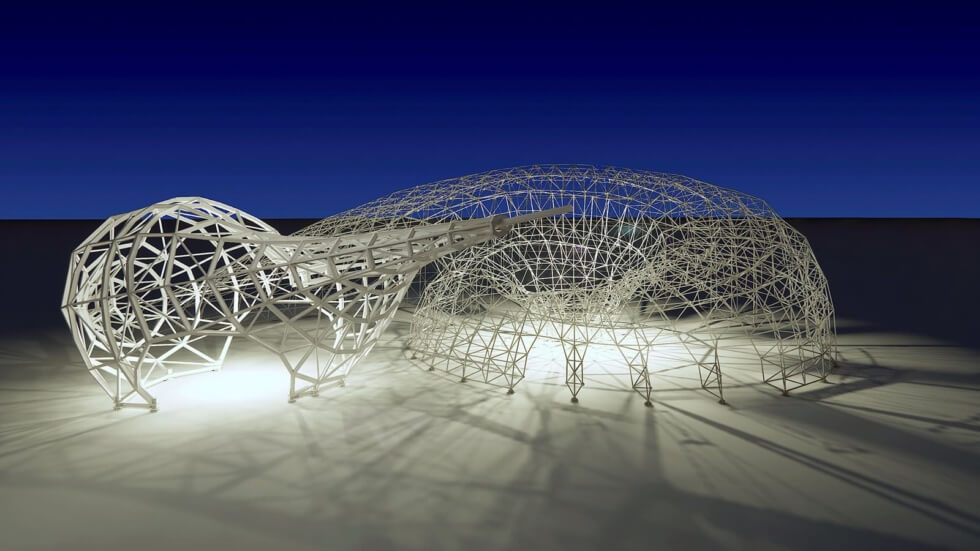
Images courtesy of Expo 2025 Osaka

